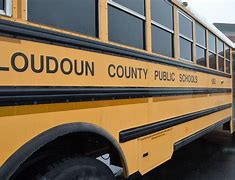 by James C. Sherlock
by James C. Sherlock
The Virginia Department of Education’s Model Policies for the Treatment of Transgender Students in Public Elementary and Secondary Schools continue to be fiercely controversial.
The Left points to harassment and bullying as the reason the 2020 law was needed. Yet we already had a law and policy against that.
The new policies were developed in response to House Bill 145 (22 Democratic sponsors) and Senate Bill 161 (four Democratic sponsors) enacted by the 2020 Virginia General Assembly.
VDOE was directed to address each element specified in the law. Many think the authors went much further than they needed to comply with the law.
It is important to know that the controversies are not over the parts of the law that protect transgender kids from bullying. Nobody defends bullying. And Virginia already had laws and policies to address that.
It is time to provide and assess the facts.
The controversies focus on the sections directed in the 2020 law on:
- Identification of students (mandatory use of pronouns of choice with draconian penalties for non-compliance — people have been fired);
- Protection of student privacy (the model policies protect that privacy — for six-year-olds — from the children’s parents) and the confidentiality of sensitive information;
- Enforcement of sex-based dress codes; and
- Student participation in sex-specific school activities, events, and use of school facilities (such as the bathrooms in which a boy wearing a skirt. allegedly in one case and convicted in the other, raped two girls in two separate high schools).
The only baseline data Virginians have to assess the extent of the problems that the new law may address concern bullying.
The state has had a law since 1950 and an updated Model Policy since 2013 to discourage bullying.
Bullying is also a matter of federal concern. Schools must report to the federal government in Civil Rights Data Collection (CRDC) reports instances of bullying over sexual orientation. The category is not broken down beyond that to isolate instances involving bullying of transgender kids.
In 2017-18, the last year for which the Commonwealth has published its CRDC report, there were 1,983 public schools in Virginia. Harassment and bullying over sexual orientation happened too often, but it was not widespread.
The report showed:
- 276 instances of harassment and bullying over sexual orientation.
- Those offenses happened in 130 Virginia schools in 38 of Virginia’s 132 school districts.
- Forty eight instances were reported in just four schools, Bailey Bridge Middle in Chesterfield (13), Denbeigh High in Newport News (13); Patrick County High (11) and John Yeats Middle in Suffolk.
Loudoun County, for example, reported no instances of bullying over sexual orientation in 2017-18.
Some may think some schools and districts haven’t reported bullying that has actually happened. Perhaps, but I doubt it — too risky. The CRDC report is tied to federal funding. Any district or school filing a false report risks charges of conspiracy to defraud the federal government.
And, in the case of fraudulent reporting of sexual discrimination issues, violation of Title IX of the Civil Rights Act of 1964.
Hardly seems worth it.
So neither we nor the state nor those who sponsored and voted for the 2020 Virginia law knows how often transgender kids were bullied, but we know it was seldom. We also know that we already had policies in place to punish bullies.
The new law had other agendas.
There are no public data that support the need for the 2020 law. It clearly was not needed to address harassment and bullying. But I am sure the sponsors felt we needed it anyway.
Look how well that has worked out.


